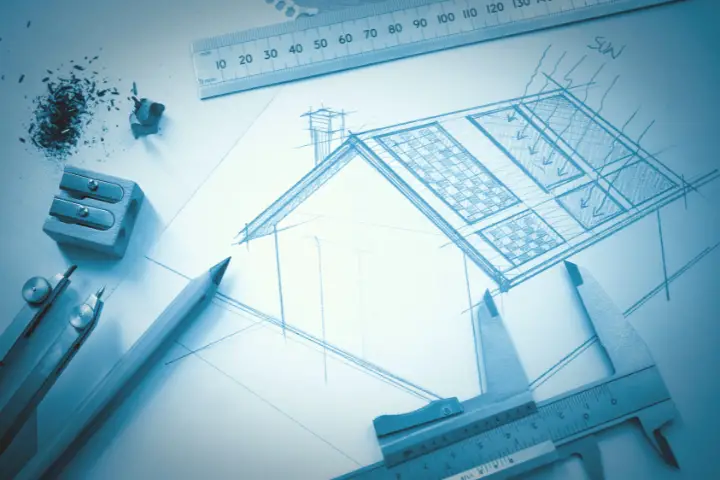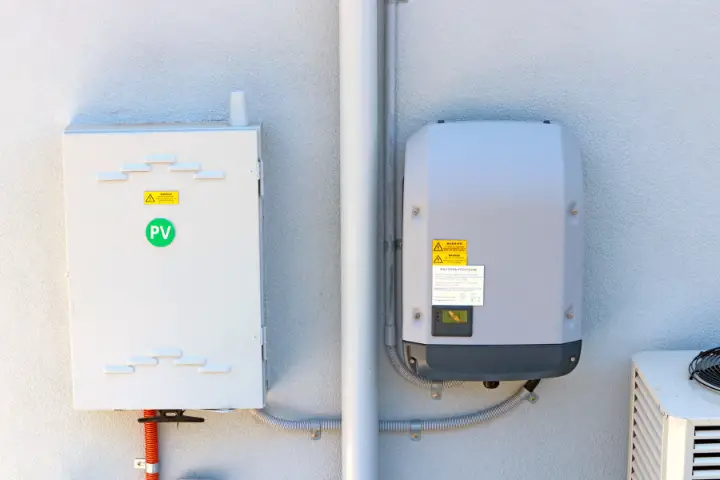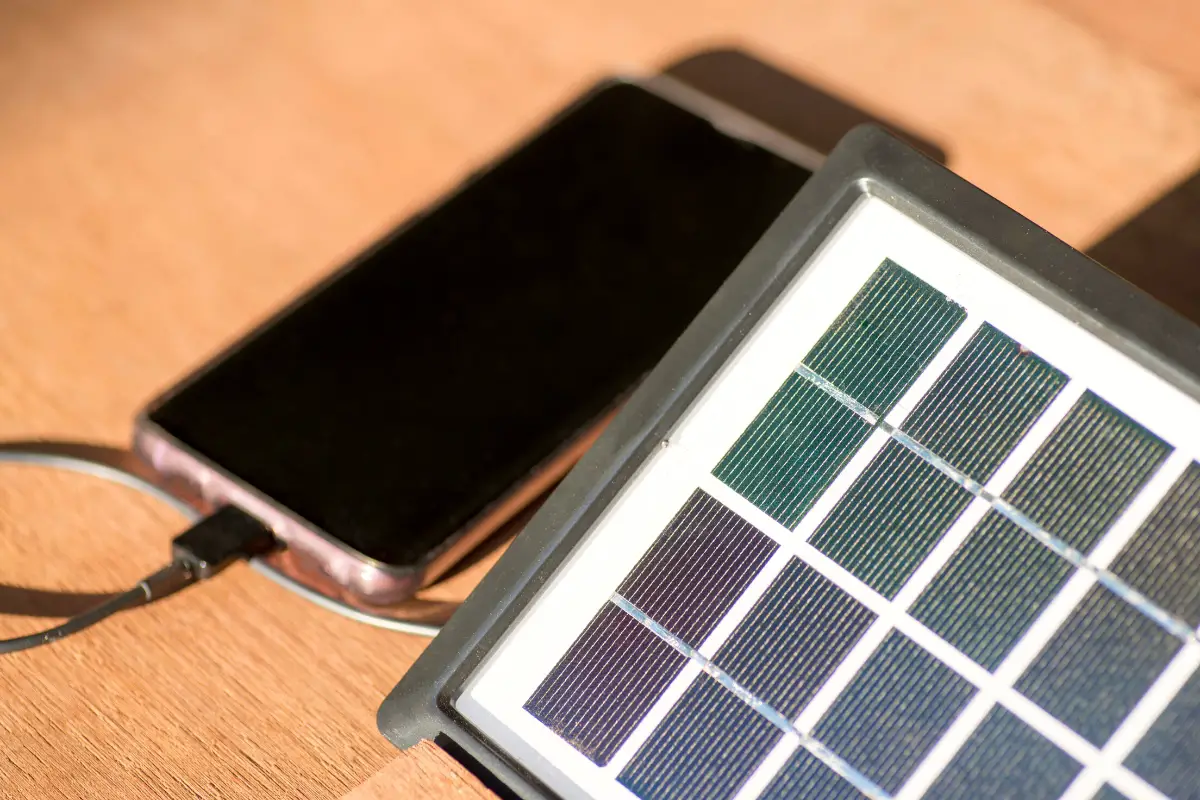A Complete Guide to Off Grid Solar Systems: Pros & Cons [+ Design Checklist]
Picture this: A peaceful off-grid cabin in the woods, like the latest Hollywood survival blockbuster. There you are, hosting friends, laughing and chatting over mugs of tea, warmed up by the very sun that powers your cabin.
It sounds like a scene straight out of a movie, doesn’t it? But what if I told you this cinematic experience isn’t just reserved for the silver screen? What if I tell you it’s all possible thanks to off-grid solar systems?
However, don’t get TOO excited. Off-grid solar isn’t all sunshine (pun intended!) and roses. So here’s an honest overview of its pros and cons.
Related Post: What Does Living Off the Grid Mean (+ Costs You May Incur)
What’s So Special About Off-Grid Solar Lifestyle?
Sounds like something from a dream?
Except it’s not! It has become an everyday reality for increasing numbers of homeowners who embrace off-grid solar lifestyle, powering our home appliances.
Another reason why it’s not a dream is that you’ll have to learn how to unplug and unplug often. Maybe even more often than you’d asked for! But more on that later.
Off-grid solar systems aren’t just some passing fad. Instead, they signify our changing attitude towards energy usage and planet conservation.
From secluded cabins in the woods to hustling urban homes – it’s becoming increasingly apparent that off-grid solar power systems are worth their weight. They offer sustainability, independence and resilience even as we grapple with our planet’s environmental struggles.
How to Design an Off-Grid Solar System

Coming up with an off-grid solar system setup is like putting together a custom outfit. It should be tailored to match your specific requirements and situation perfectly. Just as you wouldn’t want something that’s one size fits all, neither does your solar system!
Ask yourself these questions before you begin to design your own off-grid solar configuration:
- How much wattage do I use every day?
- Do I have energy-hungry appliances, or am I more of a minimalist?
- Where is my location?
- What are my average sun hours?
- What is my energy consumption pattern during different seasons?
Reaching an off-grid system isn’t always a piece of cake.
But I learned this golden tip while doing my research: The more precise you are with your power requirements, place, sun exposure and changes between seasons, the better and more robust your system will be!
How Much Is an Off-Grid Solar System?
Now we’re coming to that huge problem no one likes to go about when discussing going solar without being connected to the grid.
First, let’s talk about the initial setup costs. Yes, there’s no sugarcoating it, setting up an off-grid solar system requires an upfront investment. You’ll need to account for:
- The cost of solar panels
- Batteries for energy storage
- An inverter to convert the solar energy
- Installation costs
Fortunately, there will be several ways to offset these expenses wherever you live. In the United States, for example, you may be able to take advantage of something called Investment Tax Credit (ITC) or Federal Solar Tax Credit, which allows you to shave off a certain percentage from your federal taxes when setting up a solar energy system.
And that’s just one of many incentives available in different parts of the world. So feel free to explore what could work best for you.

DIY Off-Grid Solar System Installation: Is It Possible?
Those twinkling dollar signs might stir something inside you – a blend of hard-headedness and daring. Why not go all in and take on this project yourself?
Before we get into any details here, let’s make one thing clear. Yes, you can install an off-grid solar system by your lonesome if you’ve got the right know-how.
But don’t mistake my words for a guarantee: doing DIY things is no walk in the park. After all, DIY-ing an on-grid system isn’t easy either!
Here are some key shadow factors to consider that’ll jump right at you if go unprepared into this DIY adventure:
- Your comfort level: Are you comfortable working with electrical systems? Do you enjoy hands-on projects? If you’re the kind of person who loves a good DIY challenge (like I am), this is right up your alley.
- Time commitment: Installing an off-grid solar system isn’t a weekend project like most people think and approach it. It requires planning, preparation, and a good chunk of time. Make sure you’re ready to commit.
- Safety first: Working with electrical systems comes with risks. Always prioritize safety and don’t hesitate to call in a professional if you’re unsure. There’s nothing wrong with asking for help in your DIY solar adventures.
Personally, I have heard incredible success stories, from people feeling immense satisfaction in powering their homes to some shocking revelations I didn’t know about off-grid systems in the winter.
Off-Grid Solar System Packages with Batteries
Let me take you forward in time to a stormy night at your future off-grid haven.
The wind is howling, the rain is pouring, and the sun is nowhere to be seen. But guess what? Your lights are on, your tea is hot, and your favorite tunes are playing, all thanks to the power stored in your solar batteries.
Here’s why batteries are crucial in an off-grid solar system:
- Uninterrupted power: Batteries ensure that you have power even when the sun isn’t shining. At least in theory! In practice, you should get ready for some downtime as your battery will take quite some time to charge fully in winter.
- Energy independence: With batteries, you’re not just off the grid; you’re in control of your energy supply. You decide when and how to use the stored energy.
- Efficiency and sustainability: Modern solar batteries are designed to work seamlessly with your solar system, maximizing efficiency and contributing to a sustainable lifestyle. But as with anything, you should take the manufacturer’s promises with a grain of salt. Yes, these batteries are super steep, but no money can buy you maximum efficiency.
As an extra, here’s a little nugget of wisdom that some might get to call invaluable once they try it.
When deciding what type of batteries for an off-grid application to go with, think about their life span as well as the amount of maintenance they need. Lead acid ones tend to be cheaper initially, but they last shorter than most other types. They also require regular upkeep, where others can get away by being serviced less often.
On the contrary, lithium-ion batteries may be more costly upfront, but their long-lasting performance and low maintenance needs almost always make them worth it in the end.
So, think long-term when making your choice.
Hybrid Solar Systems: The Best of Both Worlds?

Imagine this: You step outside on a beautiful sunny day, and your solar panels are soaking up all that sunshine, providing energy for your home plus charging those batteries. Then came some unexpected clouds. No problem! That’s when you turn the switch and take power out from the grid.
That’s the beauty of a hybrid solar system. It’s like having your solar cake and eating grid power too!
Here’s what the scoop on hybrid solar systems tastes like:
- Flexibility: Hybrid systems combine the best of both worlds. (Or curb the worst of both, if that’s how you want to put it!) They allow you to generate your solar power, store it for later use, and draw from the grid when needed. It’s all about options, my friends!
- Reliability: With a hybrid system, you’re not solely dependent on the sun or the grid. This provides peace of mind, especially during extreme weather or grid outage.
- Cost-effective: By using solar power when it’s available and grid power when it’s not, you optimize your energy use.
So, if you’re someone who loves the idea of generating your solar power but isn’t quite ready to cut ties with the grid, a hybrid system could be your perfect match. It’s like dipping your toes into the off-grid lifestyle while keeping a safety line to the grid.
Choosing Your Solar System Lifestyle: On-Grid vs Off-Grid vs Hybrid
By now, you’ve likely been asking around, doing web searches on solar off-grid and on-grid topics, understanding what’s good to do and what isn’t. And yet you still feel like being at a fork in the road – which type of solar system is best? On-grid, off-grid or hybrid?
It’s similar to deciding between vanilla ice cream, chocolate and the swirl. Each has its unique taste and allurement. Only you decide which one you want to taste.

For example:
- On-grid systems (vanilla ice cream) are straightforward and reliable. They are connected to the local utility grid. When your solar panels produce more power than you need, the excess is fed back into the grid, and you might even get a credit on your electricity bill! However, if the grid goes down, so does your power supply.
- Off-grid systems (chocolate) are rich with independence and self-reliance. These systems are not connected to the grid. Instead, they rely on batteries to store excess power. It’s all about living on your terms, but remember, with great power (independence) comes great responsibility (maintenance).
- Hybrid systems (the swirl ice cream) are connected to the grid and have battery storage. You can generate your power, store it, and have the grid as a backup. It’s a flexible and reliable option, offering the best of both worlds.
So, which one do you choose?
It all boils down to one thing: how much do you feel like embracing this ‘American dream lifestyle’ while having control over electricity matters in your hand?
What Does Living With Off-Grid Solar Look Like?
The feeling of off-grid freedom is exhilarating, but you’ll also have to learn how to manage the occasional hitches and scarcity that come with intermittent power supply.
Take it from Joshua Spodek, a journalist who went totally grid-free in Manhattan’s middle. “My days soon came to revolve around the sun when it shone and trips to NYU when it didn’t. By waking before dawn—around 5 am in the summer—I avoided daytime heat and reduced my need for lighting. I started reading more; avoiding the computer meant I wrote more by hand; and I practiced exercise and meditation routines. I timed my trips to the roof with my work meetings and calls—taking the stairs rather than the elevator. During evenings, with time freed from video and social media, I volunteered more in my community,” he wrote in Time.
To Spodek, the pros of this almost ascetic experience seem to far outweigh the cons. Still, he doesn’t deny that it can be exhausting at times. Others seem to agree.
Take Wire’s Christopher Null, for example. Power soaked up from the sun will be scarcer than you think, so your savings aren’t very likely to meet your expectations. And that’s putting it mildly.
“In the summertime, there’s so much sun that my battery is usually recharged before noon. As of November, there’s so little sun that it takes most of the daylight hours to recharge, and on cloudy days it often doesn’t recharge fully at all. Instead of the 35 kWh I produced on June 25, I’m now producing about 11 kWh per day. That means more reliance on the grid and, of course, higher energy costs,” Null wrote for Wired.

Conclusion: Is Off-Grid Solar Right for You?
When it comes down to making a decision on whether or not an off-grid system is suitable for you, there are some things worth considering: your energy needs in comparison to location and budget along with any ambitions when aiming towards sustainability.
Ultimately, only you have the answer.
Off-grid solar is about more than just energy; it’s about independence, resilience, and a deep connection with our planet. It’s about harnessing the power of the sun to live life on your own terms. So why not aim for it?






